Hi everyone, if you read my recent post https://www.ecency.com/hive-194913/@ilvime79/introduction-to-camera-trap you’ll know I love wildlife and camera trapping. I’m lucky to live in the countryside, among hills and beautiful woods. Otherwise I really don’t know how could I’ve managed Covid lockdowns, without walking into nature.
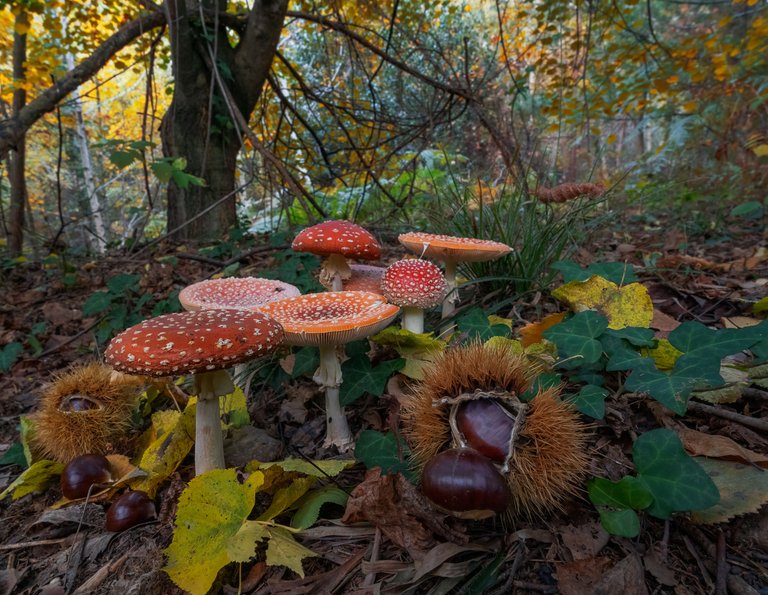
I've always loved animals, ever since I was little. Wildlife photography gave me the opportunity to learn a lot of things about them, their behavior and, especially, how to find and observe them in the wild.
In this post I’m going to show you some signs of wild animals that I found recently, during an easy and short walk nearby home.
It’s enough to pay attention to the details, look down and up, and sooner or later you’ll see something made by an animal! You should bring a camera (or simply a smartphone if you prefer) to take some pictures of what you’ll find.
If you can, try to walk in the early morning, exploiting the first sunlight and the quiet of the woods, it’s a medicine for the soul! Besides, animals and birds are active a lot at this moment of the day.
Here are some pictures I took in the early morning. When the sun is low, magical atmospheres are guaranteed!

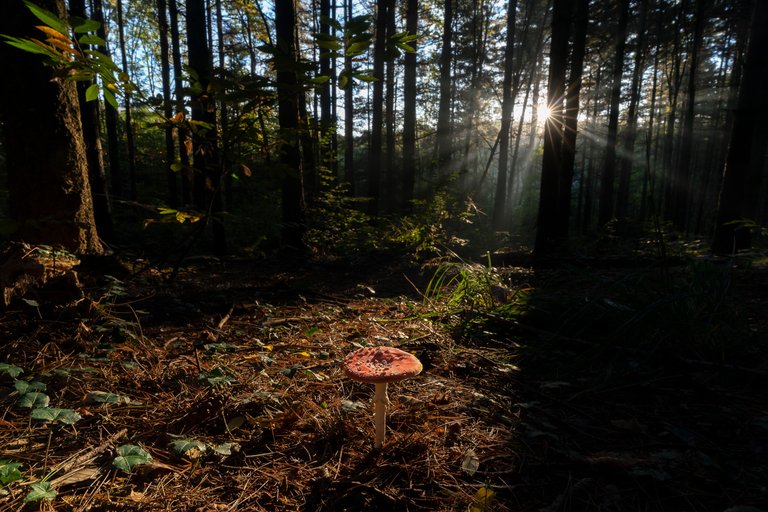
Obviously it depends on where you live, here in Italy the tracks you’re going to see easier are the ones of Wild Boars!
In this picture a big puddle, Boars really love them because they can have a mud bath to get rid of parasites. Sometimes they are also used by deer, but generally only in the summertime when temperatures are higher.

A brook excavated and modified by wild boars 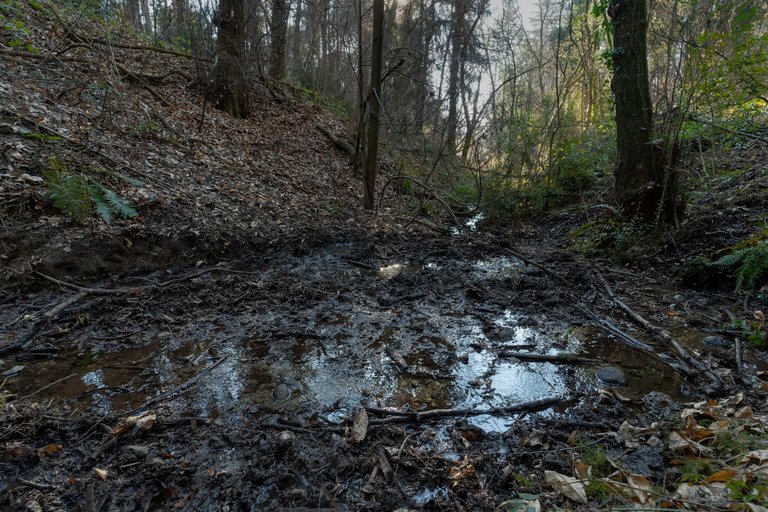
A path made by Wild Boars through a dense bush. You understand that it was them because of the mud left on the leaves, as you can see in this photo (on the left).
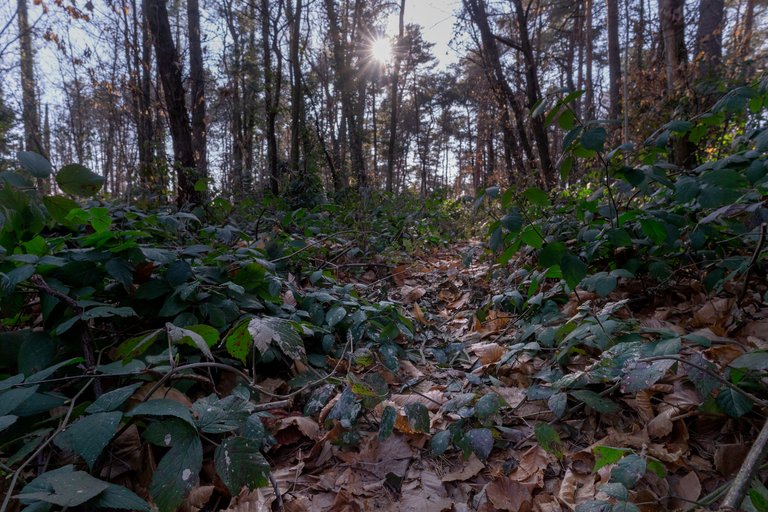
Here you can clearly see another classic sign of Boars, to get the mud off they rub themselves on the bark of trees. 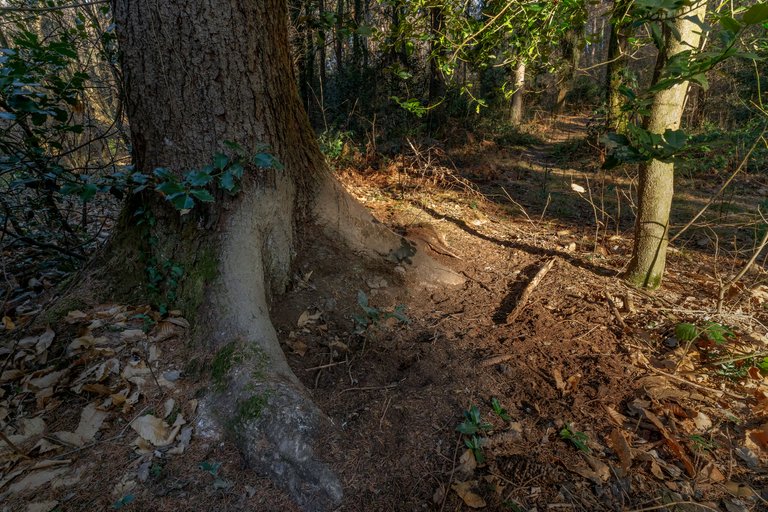
Unfortunately they are famous for ruining the meadows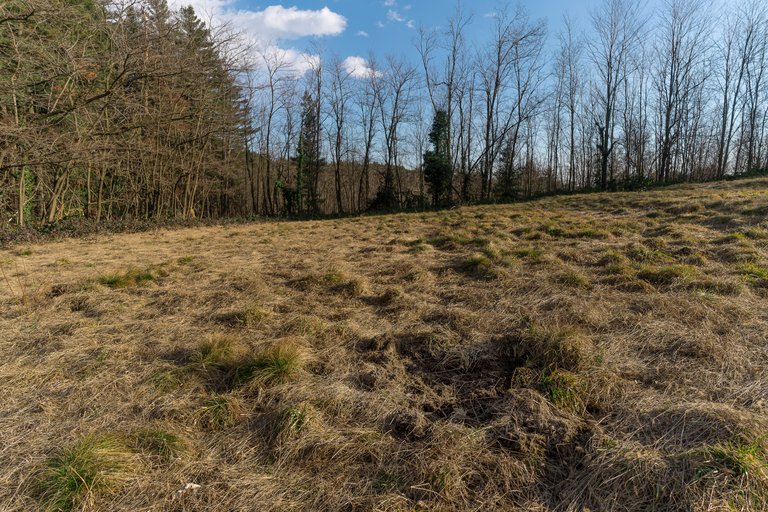
These large holes on the side of the trail were made by a European badger, a fantastic animal, one of my favorite nocturnal animals! It
digs in soft soil in search of worms and roots.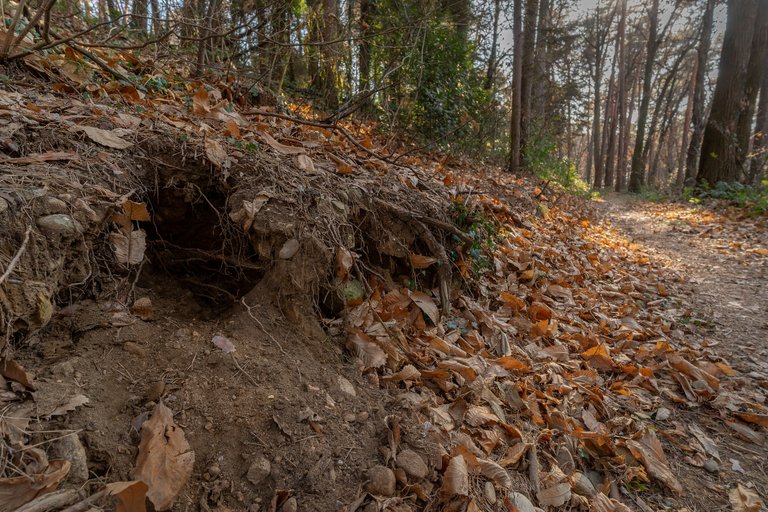
Even these little holes are made by Badgers for the same purpose
In this photo you can see an interesting mark made by a male Deer. During mating season, if you don't know what it is, please go and check my post out (https://ecency.com/hive-194913/@ilvime79/deer-mating-season), they rub their antlers on the base of the trees. They do this to mark their territory, show their dominance and intimidate other bucks! As you can see the mark is almost dark orange, that means it has two or three months (deer mating season is from September to November), later it will become brown like the wood of the tree. If it was yellow ...it had just happened!
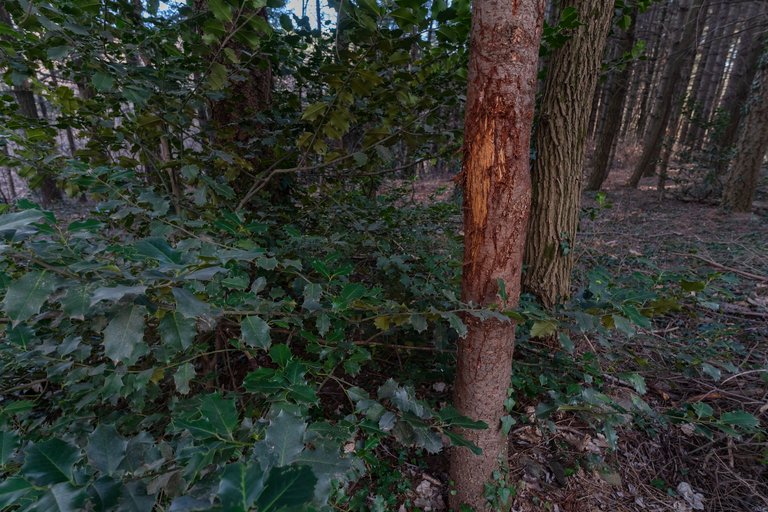
Deer also eat the bark of the trees, especially during winter when grass is scarce, but in that case the mark is completely different.
The Black Woodpecker is the largest European woodpecker, a very beautiful bird playing an important ecological role in European forest ecosystems!
Their primary food source are larvae and ants. They find these by boring holes into the bark of dead trees, as you can see in this old spruce. !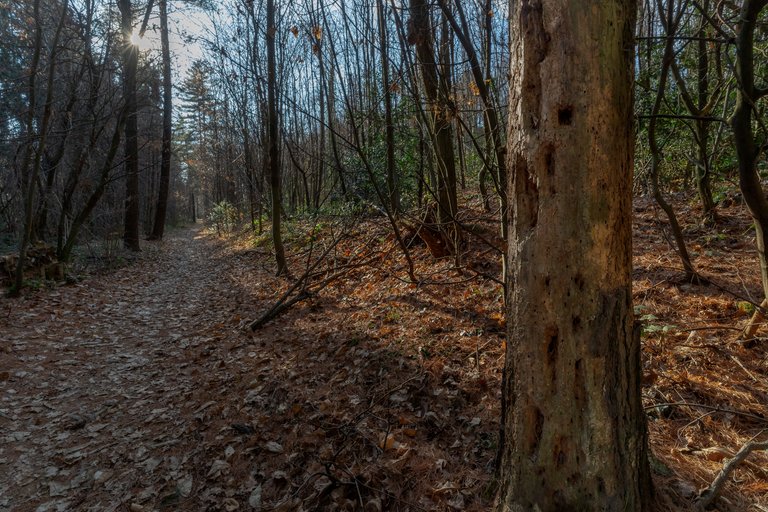
Hoping not to have bored you, I promise I'll show you in a future post other interesting signes...and also photos of a Badger den!



